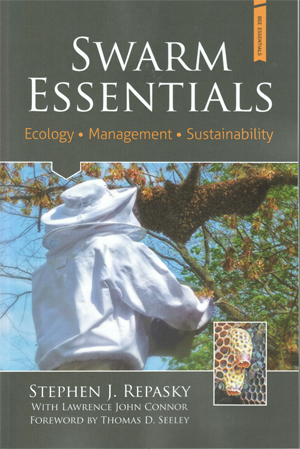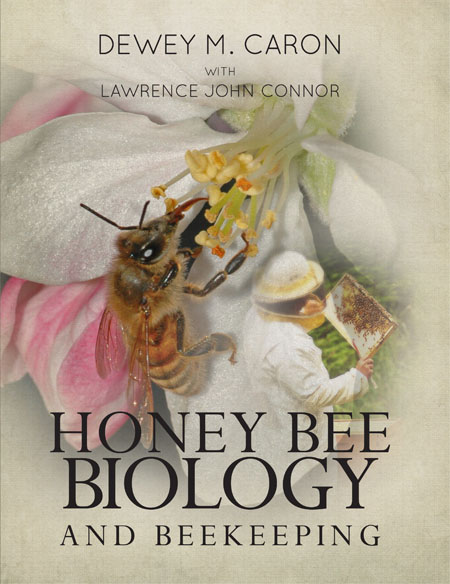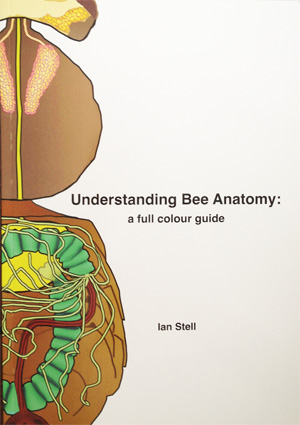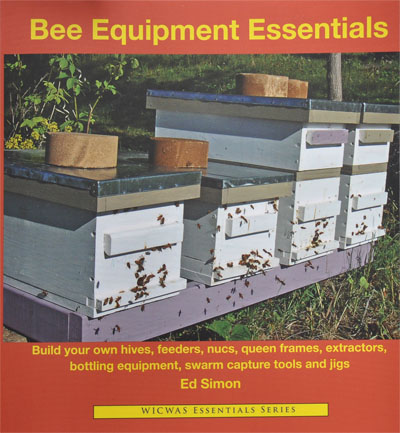And the rest of the girls are working hard and putting up some honey! I can't wait to try it!
Hampden County Massachusetts Beekeeper's Association Blog. Here we can ask questions, share knowledge, post updates and keep in touch about all things BEE.
Showing posts with label swarm recovery. Show all posts
Showing posts with label swarm recovery. Show all posts
Tuesday, June 24, 2014
Swarm Rescue Update...
The swarm I rescued a few weeks ago, is now kicking some serious butt! The swarm queen, who I am now calling Catherine II or Catherine the Great is an egg laying machine! Look at this brood pattern!
And the rest of the girls are working hard and putting up some honey! I can't wait to try it!
And the rest of the girls are working hard and putting up some honey! I can't wait to try it!
Labels:
apiary,
bee,
bee hive,
beehive,
bees,
beeyard,
brood,
brood pattern,
HCBA member shares,
hive inspection,
honey,
honey bee,
swarm,
swarm recovery,
swarms,
worker bee
Monday, June 9, 2014
Swarm Rescue...
Last Saturday, I had the opportunity to rescue a swarm from a small apple tree in Northampton. It was a good sized swarm, and lucky for me I could reach it with both feet on the ground! The bees have since been moved from my swarm catching nuc box to two 8 frame deeps. I plan to peek in and check the progress of the swarm queen this weekend. Let's cross our fingers and hope she's a good layer!
Wednesday, May 7, 2014
Brushy Mountain's Question of the Month: May...
Question of the Month
It is always exciting to find a swarm (except if it is from your hive) because, as a beekeeper, you know those are free bees. Swarming is a natural means for a colony to reproduce. Bee colonies are considered superorganisms and may swarm/reproduce several times throughout the season. Swarming season will typically happen after the queen has made it through winter, leading into the spring or early summer months. A newly established colony does not have the tendency to swarm but may, if they become overcrowded. When working the frames in a beehive, you can find swarm cells clustered together along the bottom edge of a frame.
When a hive decides to swarm, they will send out scout bees in search of a new home. This process can happen very fast (within a few hours) or they may search for a couple of days before finding a suitable home. While scout bees are searching for the next home, the swarm will find temporary resting points relatively close to their original hive (roughly 50 to 100 feet). Generally, swarms will find shelter on tree branches but can find rest on any style structure.This is your time slot to go out and capture them! Grab your NUC (cardboard orwooden) to put them in and head their way.
So, you have located a swarm, what do you need to do when you find this swarm?
A swarm may seem overwhelming and frightening but during this stage, they are not aggressive. Locate the swarm, they may have landed 1 foot off the ground or they could be 80 feet up in a tree. Access the situation and determine if the bees can be acquired safely.
It is always exciting to find a swarm (except if it is from your hive) because, as a beekeeper, you know those are free bees. Swarming is a natural means for a colony to reproduce. Bee colonies are considered superorganisms and may swarm/reproduce several times throughout the season. Swarming season will typically happen after the queen has made it through winter, leading into the spring or early summer months. A newly established colony does not have the tendency to swarm but may, if they become overcrowded. When working the frames in a beehive, you can find swarm cells clustered together along the bottom edge of a frame.
When a hive decides to swarm, they will send out scout bees in search of a new home. This process can happen very fast (within a few hours) or they may search for a couple of days before finding a suitable home. While scout bees are searching for the next home, the swarm will find temporary resting points relatively close to their original hive (roughly 50 to 100 feet). Generally, swarms will find shelter on tree branches but can find rest on any style structure.This is your time slot to go out and capture them! Grab your NUC (cardboard orwooden) to put them in and head their way.
So, you have located a swarm, what do you need to do when you find this swarm?
A swarm may seem overwhelming and frightening but during this stage, they are not aggressive. Locate the swarm, they may have landed 1 foot off the ground or they could be 80 feet up in a tree. Access the situation and determine if the bees can be acquired safely.
- Here are some things to consider:
- Use Protection: You never know when a mistake will be made, therefore, wear your protective equipment. You are handling thousands of stinging insects that may become aggressive. Wear your veil and gloves (depending on comfort level with bees)and remind any spectators that bees can sting.
- Remember, Safety First: Bees will not always land in an ideal location. If a ladder is required, use your best judgment to determine how best to retrieve the swarm(a branch may need to be cut off). Other options may be available if a ladder seems too risky (like the Hipps Swarm Retriever).

You have spotted the swarm and are ready to transfer them into your NUC.
- Here are some tips how:
- Swarms on Branch Accessible from Ground: Lay a white sheet out below the swarm. Take your NUC box and determine if the swarm is small enough to bump into the NUC. If it will fit perfectly, go ahead and give it a couple bumps to dislodge the swarm from the branch. If it exceeds the NUC box, try to get the center cluster inside the box, leaving the outskirts to fall onto the sheet.
- Swarms on Branch Accessible by Ladder: Place a white sheet below the swarm. Stand ladder on top of the white sheet so that you can easily reach the swarm.Determine if the bees can be acquired safely. Safely carry the NUC box up the ladder to dislodge the swarm into the NUC (best done with two or more people for support).
- Swarms on Something Other than a Tree Branch: They may have come to land on a fence post, roof overhang, or even on the ground. The main objective is to transfer the large cluster without disrupting them continuously. The best procedure is to spray them down with a sugar water, making it difficult for them to fly. Lay out your sheet below the swarm (as best you can) and brush them into the NUC. Try to acquire the main cluster in the beginning and then retrieve the bees on the fringes.
If you are using a cardboard NUC, you will need to transfer them into a permanent 8 frame or 10 frame hive. Place the sheet so that it leads to the entrance of their new hive and set the NUC so that the opening faces the hive. The bees will walk right up the sheet and into the hive.
Capturing the Queen is Key! To successfully acquire the swarm, you must retrieve the queen. She is likely to be in the center of the swarm, surrounded by the cluster of bees. She will be extremely hard to determine or locate, as she will have lost weight in order to fly. After capturing the swarm, check back in a couple weeks to ensure she is laying. Treat this as a new colony and FEED, FEED, FEED!
This is the time of year when colonies tend to swarm and they can swarm more than once throughout the season. Check out our other blogs about swarm prevention:
Dealing with a Swarm
Seizing the Swarm
If your colony does swarm, have your NUC box handy to go out and retrieve it. Check the hive that swarmed and ensure that they are left with a laying queen. Now one hive just became two!
Labels:
bee,
brushy mountain,
honey bee,
nucs,
swarm,
swarm recovery,
swarms
Monday, January 6, 2014
Some Recommended Reading...
For some really great beekeeping titles check out www.wicwas.com
First Wicwas Book for 2014

Price:
$23.00
Authors or Editors:
Stephen J. Repasky with Lawrence J. Connor
Ideal For:
All Beekeepers, Naturalists and Adventurers
Publisher:
Wicwas Press, LLC
Binding:
Perfect (Paper)
Dimensions:
6" x 9" x 3/8"
ISBN:
978-1-878075-32-1
Description:
Swarming is one of the most powerful instincts that most successful beekeepers encounter. Swarm Essentials outlines the ramifications of swarming behavior (highlighting the often overlooked benefits), proven prevention and management techniques, and how to recover and even prosper from a successful swarm attempt. Second generation beekeeper Stephen J. Repasky's inaugural publication marks the latest addition to the Essentials series and is an excellent read for any beekeeper who hopes to make it past their first year.
2013 Revised Honey Bee Biology and Beekeeping Drs. Dewey M. Caron and Lawrence John Connor

• Hard Cover
• 368 pages of vibrant color photos, diagrams & updated materials
• Questions and exercises for self-study & classroom teaching
• $60, includes priority mail
This book is perfect for:
• Bee schools and classes
• Master beekeeper study and review
• Life-long learners
For multiple copies for classroom, bee school or resale, contact LJConnor@aol.com for a quote including shipping costs. You will receive a discount for multiple copy orders.
For single copies, order from the Wicwas Press website, www.wicwas.com, and use the PayPal bookstore.
—Chapter titles—
• Introduction Beekeeping art or science, humans and bees, bees as weapons, bee gums, superorganism, learning beekeeping
• What’s in a name? The classification system, bumble bees, other bee species, races and hybrid bees
• Sociality Insect societies, wasps, ants, stinging in Hymenoptera
• What is a honey bee? Hive bees, field bees, fifferentiation
• Honey bee anatomy Digestive and excretory systems, reproduction and other systems, how the bee’s body works
• Bee nest Beeswax comb, nest organization, the modern beehive
• Dance language communication The wagtail dance, dance language controversy
• Pheromone communication Queens, pheromone functions, food transmission, colony odor, trail pheromones
• Queens, queens, queens Replacement, swarming, queenless
• Foraging and bee botany Forager types, water and propolis, fruit bloom, clovers, major U.S. nectar and pollen plants
• Getting started When and how, personal equipment, setting up hives, drifting
• Basics of management Key concepts, avoiding stings, robbing
• Fall and winter in the beehive Requeening, feedinig why colonies die
• Spring management Spring buildup, weak colonies, swarm control
• The honey harvest Nectar flow, supering, harvesting honey
• Honey & other bee products What can go wrong? Pollen, beeswax, royal jelly, pollen, bee brood, venom, mead
• Queen mating and rearing Raising queen bees, mating control, nucleus colony basics
• Pollination Managing bee colonies for pollination, improving pollination results
• Bee mites Varroa mites, integrated pest management, treatment options for mite control
• Diseases and pests Adult and brood diseases, pesticides,
conditons that mimic disease
Undertanding Bee Anatomy: a full colour guide

Ian Stell, MD, London
COLOR THROUGHOUT!
Approx. 6.75 inches wide and 9.75 tall, softcover, 203 pages, Catford Press.
$60 priority mail postpaid in the United States
Wicwas Press is authorized to sell this book for Dr. Stell in the United States and Canada
This book aims to do two things.
Firstly, to explain the structure of this fascinating insect and secondly, through stunning images, to reveal the insect’s intricate detail.
Dr Stell has applied his knowledge of the human body in describing the honeybee, system by system.
The book starts with a chapter on the developmental stages, showing the internal changes taking place from the egg to the larva, and then the pupa.
It includes chapters on all body parts, wings and flight structures, the circulatory, respiratory and digestive systems and finishes with chapters on the queen and the drone.
The anatomy is explained in clear colour diagrams and illustrated with over six hundred high-quality photographs. These include electron micrographs, close-up images, high-power stained sections (histology) and other techniques.
This concise but readable book is perfect for the British exams in bee biology and training for master beekeeper programs in the United States. It is also a valuable resource for any beekeeper wanting to understand his insects better, or any student or scientist working in this area.
Dr. Ian Stell, has been a beekeeper in an urban area in South-East London since 1998, keeping about fifteen colonies. His day job is as a doctor in Emergency Medicine. Keeping bees has involved facing many disease challenges, much as Emergency Medicine does. This has led Ian into an interest in the microscopic examination of bees, and he has applied his knowledge of the human body in describing the honeybee, system by system. Ian became a Master Beekeeper in 2010, and was awarded the prestigious Wax Chandlers award, from one of the ancient City Livery companies with an historical link to beekeeping.
________________________
www.wicwas.com
__________________________________________________
History of American Beekeeping, Reprint of Frank Pellett's Classic 1938 Work.
 It took me years to find a copy of this book I could afford, and then only due to the kindness of a friend. After the popularity of the Doolittle books, I knew that beekeepers liked classic reprints. And what a reprint this is. I was able get this reprinted by a printer who is a master of detail, Jeff Shaw, a Burgh Bees' member in Pittsburgh. The reprint looks just like the original, only fresher and a lot less expensive! There is gold foil and an embossing on the cloth hardcover. The book is Smythe sewn, so it will last longer than most first owners. Inside the book is exactly the same as the original but printed on earth-friendly paper and plant-based inks.
It took me years to find a copy of this book I could afford, and then only due to the kindness of a friend. After the popularity of the Doolittle books, I knew that beekeepers liked classic reprints. And what a reprint this is. I was able get this reprinted by a printer who is a master of detail, Jeff Shaw, a Burgh Bees' member in Pittsburgh. The reprint looks just like the original, only fresher and a lot less expensive! There is gold foil and an embossing on the cloth hardcover. The book is Smythe sewn, so it will last longer than most first owners. Inside the book is exactly the same as the original but printed on earth-friendly paper and plant-based inks.
The price is $35 including priority mail postage inside the United States, and $45 elsewhere. If you cannot use the following website's PayPal account, send a U.S. Dollar check drawn on a U.S. Bank to Wicwas Press, 1620 Miller Road, Kalamazoo, MI 49001, USA.
www.wicwas.com
www.wicwas.com
__________________________________________________
Consider Bee-sentials: A Field Guide as your bee school textbook
 A number of bee clubs and bee school instructors have switched to Bee-sentials: A Field Guide, for their bee school textbook. The book was published last year, has 208 pages, and is in full color.
A number of bee clubs and bee school instructors have switched to Bee-sentials: A Field Guide, for their bee school textbook. The book was published last year, has 208 pages, and is in full color.
There are 15 chapters that may be used for lectures in a semester-long class, or covered survey-style in a one-day bee school.
It contains a thorough overview of getting-started basics, an equipment section, and how-to set up hives.
It recommends new beekeepers start with two hives their first season so they help each other during the summer, and helps them get at one least colony through the winter. AND it discusses the establishment of a nucleus colony for spare queen backup.
It reviews the beekeeper's management year, has 25 pages of bee plants in full color, covers the major hive products, and explains swarm management and control.
There is a good treatment of bee mites and diseases, all with close-up color photos.
Worker, drone and queen production and activities review what is normal and how to problem solve.
Hive nutrition, other bee species, bee club mentorship are included. So are an extensive glossary, reading list and index.
If you go the the www.wicwas.com website, you may purchase copies for $29.95 postpaid. But if you email LJConnor@aol.com, you can find out how to purchase quantities of this book at discount. As an instructor, ask for a free copy for your use while teaching the class.
We have lots of copies in inventory, and will ship them out as soon get your order.
Bee-sentials gives the new beekeeper a book with meat on it's bones, a book they can carry in their briefcase, purse or backpack, or keep in the car or truck as they go to the bee yard. It has the basics, and a whole lot more. Many advanced beekeepers learn from this book as well. There are dozens of questions other beekeepers have asked, that have have been answered.
Send that email today to LJConnor@aol.com and get details about using this book for your next class.
www.wicwas.com
__________________________________________________
Include this book in your beekeeping courses for new and experienced beekeepers. More than building your own beehive. This book shows you how to make and USE simple tools in the apiary.
 This large format, softcover book folds open in the shop for ease of use.
This large format, softcover book folds open in the shop for ease of use.
Large font size.
Full color throughout.
Drawings of most items, and how-to-use photos.
Ed Simon is a retired IBM trainer, and now dumpster diver, who enjoys building things and is a master of building jigs that hold equipment together during assembly.
He writes for Bee Culture magazine.
Price mailed—$20.00 inside the USA.
There is something in this book for you whether you are a new beekeeper or an 'Old Smoke.'
www.wicwas.com
www.wicwas.com
Please visit www.wicwas.com for a look at the complete bee book list. Remember, when you order two or more books at one time, I ship (to USA locations) by Priority Mail when your order fits the flat rate envelope or box. For example, if you get two or more of the Essentials booksthe order ships Priority Mail. The History and Anatomy books automatically ship by priority mail and no additional fee is required.
Thanks for your support and book-buying passion. I hope to see you soon!
Larry Connor, Ph.D.
Wicwas Press
Larry Connor, Ph.D.
Wicwas Press
Labels:
bee,
bee hive,
beekeeping books,
beekeeping school,
Beekeeping supplies,
bees,
beeyard,
honey bee,
queen cell,
swarm,
swarm cells,
swarm recovery,
swarms
Thursday, May 16, 2013
Bill's GIANT Swarm...
This just in from Bill Crawford!
Bill stands 6 feet tall and this swarm is taller and as wide as he is! Unbelievable!
Bill stands 6 feet tall and this swarm is taller and as wide as he is! Unbelievable!
Thanks for sharing, Bill!
Labels:
bees,
Bill Crawford,
HCBA member shares,
honey bee,
swarm,
swarm recovery,
swarms
Tuesday, May 7, 2013
Mike Trapped a Swarm...
HCBA member Mike Koleczek sent in this awesome photo of the first swarm he's captured in his trap...
We'll have to find out what he using to lure them, because it looks like it's working good!
We'll have to find out what he using to lure them, because it looks like it's working good!
Labels:
bee,
bees,
HCBA member shares,
honey bee,
swarm,
swarm recovery,
swarm trap,
swarms
Monday, May 21, 2012
Recovering Your Own Swarm...
Dan & Joseph Gleason are not going to let their bees get away! Check out this great video Joseph shot of Dan recovering a swarm that landed in their apple tree.
Keep an eye out, everyone! Swarms seem to be aplenty.
Labels:
bees,
HCBA member shares,
honey bee,
swarm recovery,
swarms,
video clip
Subscribe to:
Posts (Atom)
